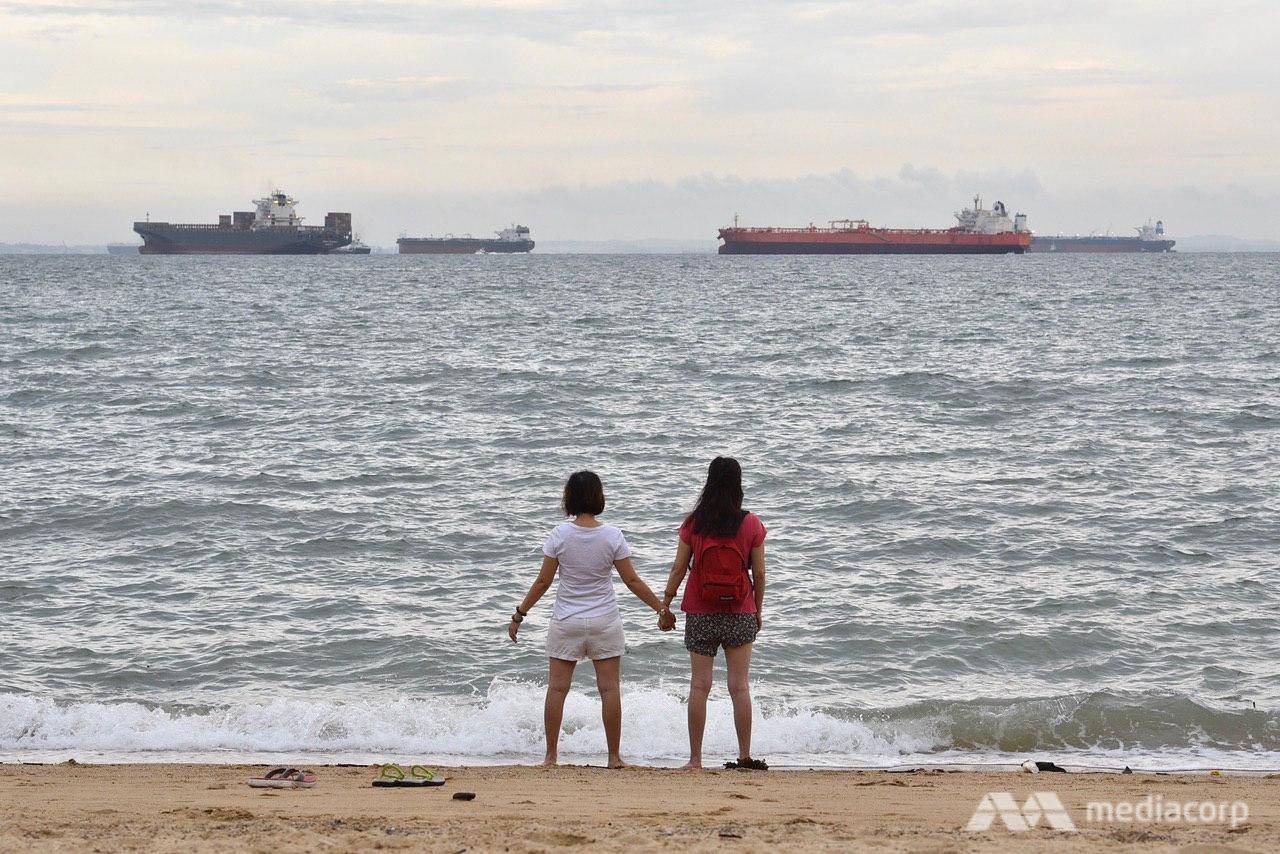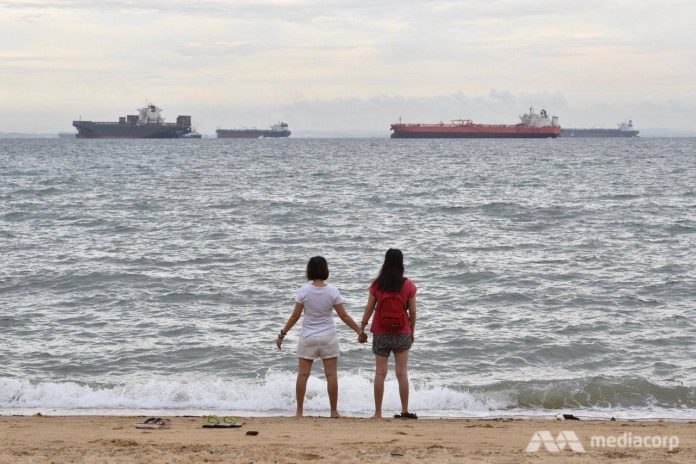SINGAPORE: The coronavirus shock has led many countries to take extreme actions to either shut down entire sectors or force them to keep safe distances and operate far below normal capacity.
Most have borne witness to a wholesale crash in consumption simply after months of lockdowns and other restrictions saw empty malls dot cities around the world.
Even reopening may not resuscitate economies when fear drives consumers to refrain from going out. Lost income and uncertainty about the future will continue to dampen spending.
LISTEN: Entering Phase 2: What’s behind rules on gatherings, dining, weddings and more?
Negative demand shocks are just one side of the story.
Richard Baldwin, a prominent trade economist from the Graduate Institute in Geneva, predicted the trade collapse in 2020 will far outweigh the “Great Trade Collapse” of 2008.
He argues the fall in the global financial crisis was mostly demand-driven. The fall of Lehman Brothers did massive damage to the financial sector.
The contagion to other sectors started only when firms and customers held off investment and spending plans as feelings of insecurity and anxiety emerged.
COVID-19 is also fuelling massive disruptions on the supply side too, exacerbated by the massive expansion of global value chains in the past. When Chinese manufacturers resumed production in April, they were again constrained by insufficient supplies from Europe and Southeast Asia.
Despite huge fiscal and monetary packages supporting households and business owners rolled out, the outlook for 2020 is bleak.

Beachgoers take in the view at East Coast Park on Friday evening (Jun 19), the first day beaches are reopened to the public after Singapore’s COVID-19 circuit breaker. (Photo: Jeremy Long)
Trade is expected to decline by between 13 per cent and 32 per cent, with only partial recovery in 2021, according to the World Trade Organization (WTO).
As a small, open economy heavily dependent on international trade, Singapore cannot isolate itself from the global economic downturn.
The Singapore economy is projected to contract by 5.8 per cent in 2020, according to a Monetary Authority of Singapore survey, with particularly pessimistic outlook for the wholesale and retail trade sector.
READ: Commentary: Is low growth the new normal for Singapore?
READ: Commentary: The brewing discontent with trade and one step to restoring faith in globalisation
The Singapore economy has already entered a technical recession, after shrinking by 41.2 per cent quarter-on-quarter, according to preliminary Ministry of Trade and Industry second quarter estimates released on Tuesday (Jul 14).
DEGLOBALISATION AND THE RISE OF PROTECTIONISM
While the pandemic has shone the spotlight on economic shutdowns, the reality remains that international trade was already slowing in 2019 before the pandemic started, with total value of world merchandise trade falling by 3 per cent.
A number of factors have been at work, including the flattening of the growth in global supply chains over the last decade.
China remains an exporter powerhouse, but the country has begun to turn inward by focusing more on domestic consumption.
The country’s merchandise exports as a share of GDP falling from 31 per cent in 2008 to 17 per cent in 2019, according to China’s National Bureau of Statistics and General Administration of Customs.
These trends have accelerated under President Donald Trump’s “America First” policy and a US-China trade war. Bilateral trade between the world’s two largest economies shrank by more than 15 per cent over 2019.
US President Donald Trump, after pursuing a trade war with China, is waging a blame game over coronavirus. (Photo: AFP/JIM WATSON)
With deep integration into global value chains, Singapore is exposed to blows thrown around in the US-China trade war. When Trump raises tariffs on Chinese goods, demand for intermediates from Singapore was also affected.
But the ongoing COVID-19 crisis is driving the world to retreat from integration and accelerated deglobalisation, as national priorities take centrestage and uncertainties over alliances and international cooperation seethe.
About 75 countries, including some EU countries, India and Indonesia, have imposed export restrictions and other protectionist policies to boost local availability of masks and personal protective equipment (PPE).
Political leaders have voiced new thinking about the shape and form of economic integration. French President Emmanuel Macron has said that it was clear that this kind of globalisation was “reaching the end of its cycle”.
READ: Commentary: COVID-19 could redefine Singapore’s place in the global economy
READ: Commentary: China and India – the region’s twin growth engines – are stuttering
Policymakers also called for greater self-reliance as western countries imported millions of masks and PPEs from China.
GROWING CALLS FOR REGIONALISATION
In this context, the idea of regionalisation has unsurprisingly gained traction. Many supporters of regionalism, however, mistakenly equate it with shifting away from China.
Yet, regionalised supply chains is agnostic on this question, where the concept simply involves more trade with neighbouring countries. An American firm relocating its factories from China to Vietnam would not be categorised as an example of regionalisation.
Regionalisation first emerged as an alternative form of trade liberalisation when the Doha Round Negotiation of the WTO failed in the early 2000s.
Many countries turned to regional trade agreements that reduced tariff and non-tariff trade barriers between member countries.
For the US, further developing regionalised supply chains can be difficult. The North America Free Trade Agreement and its new formulation under a US-Mexico-Canada Agreement, have already drastically reduced trade costs between the United States, Canada and Mexico.
U.S.-Mexico-Canada Agreement (USMCA) signing in Mexico City. (File photo: Reuters)
A study by Lorenzo Caliendo and Fernando Perro, prominent trade economists, found that NAFTA augmented aggregate intra-bloc trade by 118 per cent for Mexico, 11 per cent for Canada and 41 per cent for the U.S.
Similarly, the European Union’s trade is already regionalised to a large extent, thanks to the internal single market developed in past decades.
The next hotspot for regionalisation is probably East Asia, the centre of two mega-regional trade agreements – the Comprehensive and Progressive Agreement for Trans-Pacific Partnership (CPTPP) and the near-to-completion Regional Comprehensive Economic Partnership (RCEP).
RCEP involves all 10 ASEAN member countries and five of its largest trading partners, aiming to progressively reduce tariffs on many products within the huge regional trade bloc. CPTPP, on the other hand, involves eleven countries from the Trans-Pacific region.
READ: Commentary: Airline industry faces financial crisis with more bankruptcies looming
READ: Commentary: Sending international students home will hurt the US more than benefit it
While neither was originally planned to be East Asia-centric, circumstances have led to both deals entrenching greater economic regionalisation in this part of the world. India opted out of RCEP in November 2019.
The CPTPP, the world’s largest free trade agreement, has seen the US withdraw from the agreement soon after Donald Trump was elected in 2016.
The result will be to refocus East Asia’s economic ties in the region which is good news. A study released by the Peterson Institute of International Economics predicts the two free trade agreements can fully offset the negative effects of the trade war globally.
In addition, the trade war makes the RCEP especially valuable because it strengthens East Asian interdependence and leads to greater value creation on the whole, raising trade among members by US$428 billion and reducing trade among non-members by US$48 billion.
SINGAPORE MUST DEEPEN TRADE LINKS
Singapore actively participated in the negotiations of both agreements. To offset the negative impact of the COVID-19 pandemic on Singapore’s trade, greater involvement in the region’s trade liberalisation seems inevitable.
Looking ahead, Singapore should focus efforts in promoting trade in services. The country’s total merchandise trade decreased by 3.2 per cent in 2019, but total service trade increased by 1.3 per cent.
Singapore’s economy grew by less than one percent in 2019, with exports hammered by the bruising US-China trade war. (Photo: AFP/Roslan RAHMAN)
Services have taken a huge hit this pandemic season. Among sectors contributing most to Singapore’s service exports, the travel and transport sector, contributing to more than 20 per cent of GDP in 2019, have been more seriously hit.
The Government must strike a delicate balance between public health and economic recovery. Regional “travel bubbles” suggested by Minister for National Development Lawrence Wong is a possible solution.
The financial sector, on the other hand, seems less affected as a large proportion of related tasks can be completed remotely. Trading floors in Singapore and other financial centres around the world have been much less crowded as traders remotely log in to their work computers from home.
However, a functioning financial sector without physical contact requires rapid and reliable network and advanced IT hardware.
Slower networks at home may put traders into a disadvantageous position. With large transactions, even milliseconds matter. Further improvement in the network quality can also help the IT service industry, another major contributor to Singapore’s service exports.
Education is another sector that could boost Singapore’s service exports. Witnessing the rise of social unrest and poor attempts to cope with COVID-19 in the US as well as the turmoil in Hong Kong, more students from China have considered Singapore as their top destination for higher education.
Universities in Singapore should think about expanding internationally by opening up new campuses within the region, especially in China.
Universities from Hong Kong have passionately formed joint ventures and established educational institutions in neighbouring Guangdong province. New York University and Duke University, both prominent US institutions also founded independent campuses in Shanghai metropolitan area.
Yuan Mei is an Assistant Professor of economics at Singapore Management University. His research fields are international trade, spatial economics, and development economics.





